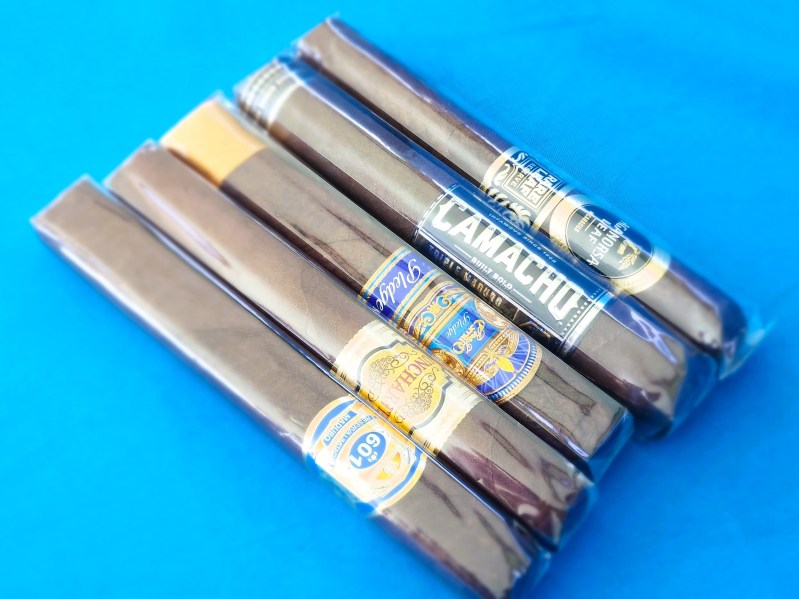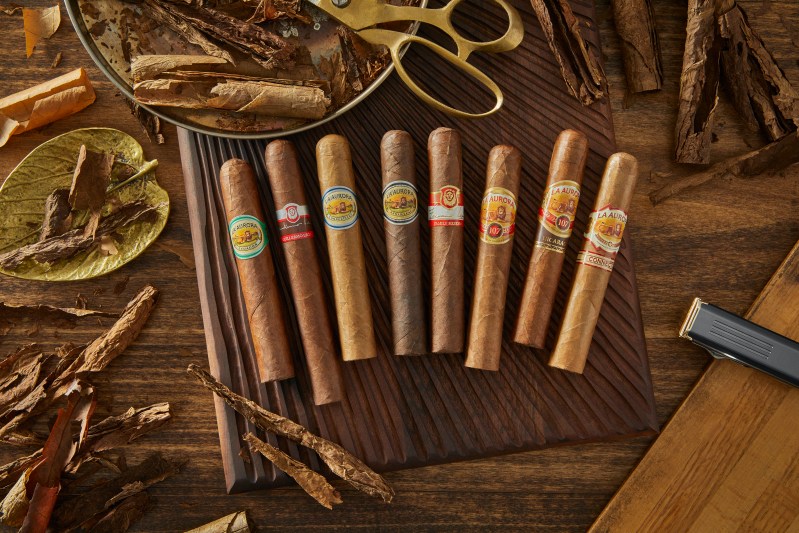
You may or may not know, but the wrapper, the outer shell of the cigar, introduces a lot of flavor and nuance to the blend. Yes, the binders and fillers also matter and have their own flavors, but the wrapper effectively makes up anywhere from 75% to 90% of the flavor when you’re smoking. A Maduro wrapper, or Maduro cigar, is a perfect example of that. The darker leaf usually offers more complex flavors. Think a porter or stout beer or an aged or dark rum. From Maduro, you’ll mostly get chocolate or cocoa, hints of coffee, and wood notes like hickory, earthy zest, and rich pepper.
At least compared to something like a Connecticut wrapper, which is lighter and also has much lighter flavors, a Maduro wrapper is often considered to be “stronger.” But this is a common misconception. More flavor and darker colors don’t necessarily mean strong. Most Maduro cigars are medium to full-bodied experiences, offering a delectably nuanced and flavorful smoke. However, something like a Connecticut Broadleaf, which is a type of Maduro, can be a lighter smoke.
It probably won’t surprise you to hear that Maduro cigars, along with Corojo, are actually some of my favorites.
What color are Maduro cigars supposed to be?

The Maduro wrapper and leaves are darker for a couple of reasons we’ll explore. But typically, they’re a much darker brown than Connecticut wrappers and span a range of dark browns to midnight blacks — the three darkest being Oscuro, Colorado Maduro, and standard Maduro.
Why are they a darker color?
Without diving too deep, there are several factors that affect the color, flavoring, and fermentation of the Maduro leaves:
- Maduro leaves are grown thicker to begin with because they undergo a more extensive fermentation process.
- The cultivation process affects the flavor and colors of the leaves, specifically where the leaves are harvested on the tobacco plant. Top leaves give a different result and are used for Maduro.
- During fermentation, they’re subjected to extreme temperatures, especially when compared to other forms of tobacco, and those high temperatures turn the leaves dark brown.
- The longer the fermentation, the darker the resulting leaves, which are used for the cigar wrapper.
- Aging a cigar can also affect the colors and flavors, and most cigar factories will age their finished products for a time before putting them on the market.
Something we haven’t touched on is that the seeds of the tobacco plant and their origins, particularly the region and soil in which they are grown, will also have a huge impact on the flavoring. Acidity, for example, significantly alters the flavor, and the volcanic soil of Nicaragua makes a huge difference to something grown in the Dominican Republic or Cuba.
The fermentation and aging not only give Maduro wrappers their darker color and complex flavors but also produce a more oily leaf, giving cigars rolled with it the same appearance and an almost glossier finish.
Interestingly, the word “Maduro” in English simply means ripe, mature, or dark, which is exactly what the Maduro leaves are.
What Maduro cigars do you recommend?

As a cigar enthusiast myself, I often smoke Maduro cigars. Here are some of my recommendations if you’ve never had them or want to give some new ones a try:
This is, by no means, a comprehensive list. There are way too many enjoyable Maduro cigars to list here. If you’re curious about some of my other top picks, I’ve also recommended my favorite smokes under $8.



